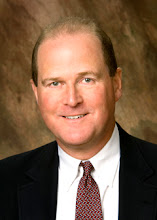8/22/11
One must always take Wharton Finance Professor Jeremy Siegel with a grain of salt, and not only because he teaches at an Ivy League institution; while Dr. Siegel is doubtless an insightful and attentive observer of the markets, he often lets his enthusiasm supersede his good judgment, even more often than yours truly lets his natural pessimism supersede his good judgment. Having established that caveat, I quickly add that I read Dr. Siegel’s work whenever I happen upon it in some business publication and turn on the volume when Dr. Siegel appears on CNBC; he always has something interesting to say and I always learn something when he opines.
This morning’s Wall Street Journal (Monday, 8/22, page A13) op-ed piece that Dr. Siegel co-authored with Jeremy Schwartz of Wisdom Tree is no exception. In it, the authors make a compelling case for stocks that pay relatively big and growing dividends, a case into which I am starting to buy into…sort of. To the extent I want to be in stocks (limited over the last ten or so years), I would like to be in the stocks of companies that consistently pay large and growing dividends. Right now, my hesitancy to be in stocks, and my long time preference for index funds, which don’t fit all that nicely into such a strategy, are superseding my preference for a dividend growth strategy. But I am reorienting the few stocks in my portfolios toward dividend payers and, should the day ever come when I have enough confidence in the world economy to be in stocks in a larger way, I will earnestly explore a major commitment to a dividend growth strategy. This may have something to do with my rapidly advancing age, but it has more to do with something I tell my Finance and Investments students, to wit, while, as a guy with something of an accounting background, I can show you myriad ways to fake net income, you can’t fake dividends, or certainly cannot fake dividends for long; you simply have to generate cash to pay dividends, and have to increase cash flow consistently to regularly increase those dividends. Further, cash dividends are innately quite satisfying; who doesn’t like cash?
So while I liked the overall thrust of Dr. Siegel’s latest Journal article, I take issue with the large section of that article in which he also gets in line to bash Treasury Inflation Protected Securities (“TIPS”). In it, he says that
“…recent (TIPS) should be enshrined in Ripley’s “Believe it or Not!”
citing the fact that the yield on 10 year TIPS turned negative (by one basis point) last Friday. Dr. Siegel marvels that people are willing to lend the government money for 10 years with no real yield for ten years. Why should this be so curious when TIPS are perhaps the safest investment out there (other than T-bills, with a 0% nominal yield and therefore a negative CPI real yield) that provides any inflation protection at all? Further, if the increase in the CPI averages more than 2.10% over the next ten years, the real yield on the conventional 10 year will be negative as well, and people are figuratively tearing conventional 10 years out of other people’s hands.
These arguments for TIPS, however, are probably not a good counter to Dr. Siegel’s objections to TIPS, however, simply because Dr. Siegel would not advise buying conventional treasuries, either; after all, he is perhaps the stock market’s most enthusiastic, or at least its most articulate, disciple. But the basis of Dr. Siegel’s, and countless others’, latest harangue against TIPS is the aforementioned negative real yield on the 10 year TIPS. Surely, however, Dr. Siegel knows, and others who so eagerly cite the negative one bp yield on the ten year TIP know, that the real yield on the 5 year TIP has been negative since last Fall; on 9/30/10, the 10 year TIP was yielding negative 14 basis points. That did not stop the yield on the 10 year TIP from falling from 69 basis points on that day to its negative 1 bp yield today, and not in a straight line. The yield on the five year TIP is currently at an all time low of negative 89 basis points. If people are willing to lend their money to the government at a negative real yield for five years in exchange for inflation protection, why should it be so strange, and such an inflection point for the market, if they suddenly are willing to lend the government money for ten years at a (barely) negative real yield?
Yes, the 5 year TIP market is not as large or as liquid as the 10 year TIP market, but the 10 year TIP market is no bastion of liquidity itself. And to admit that the 5 year TIP market is not a paragon of liquidity is not to deny that it has any revelatory value. The yield on the 10 year TIP, judging from the performance of the 5 year TIP, could get substantially negative as investors find few really good inflation hedges and gold’s levels make people increasingly nervous.
Monday, August 22, 2011
Subscribe to:
Post Comments (Atom)

No comments:
Post a Comment